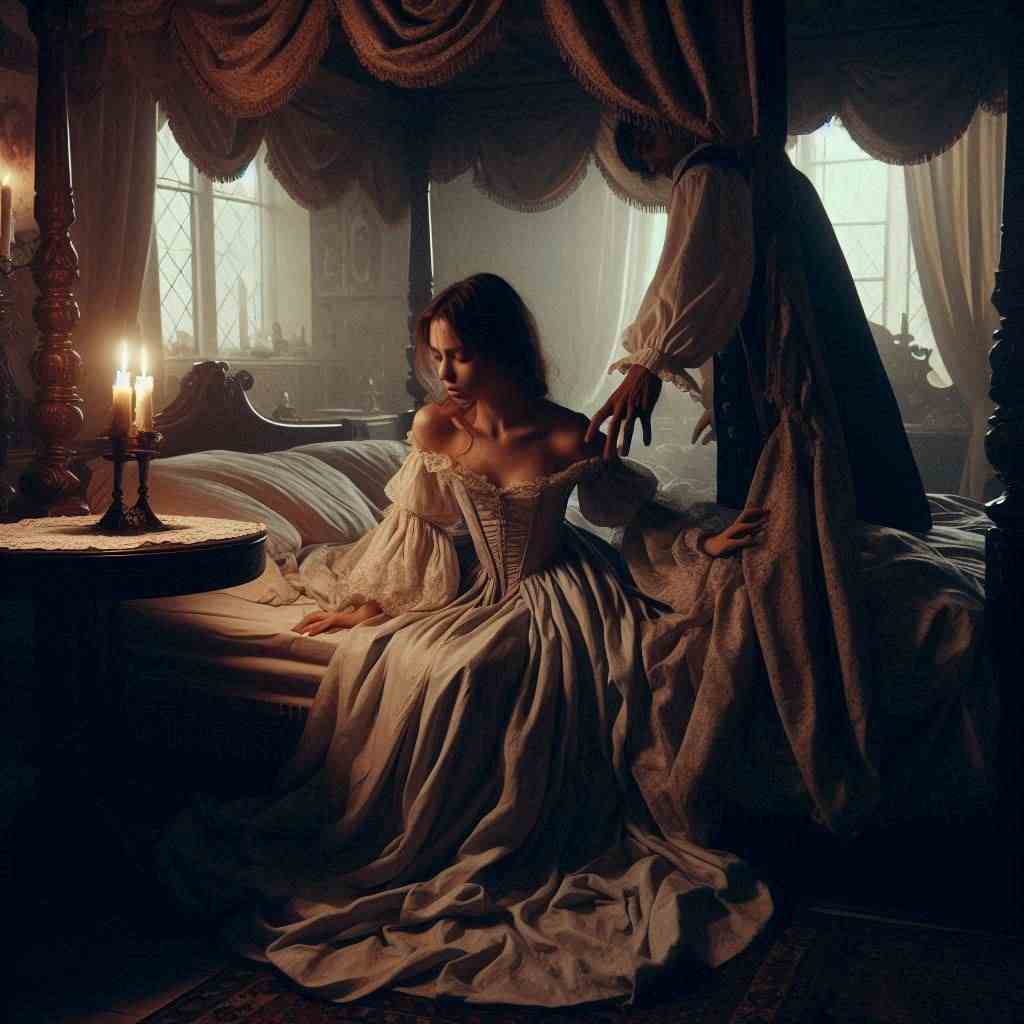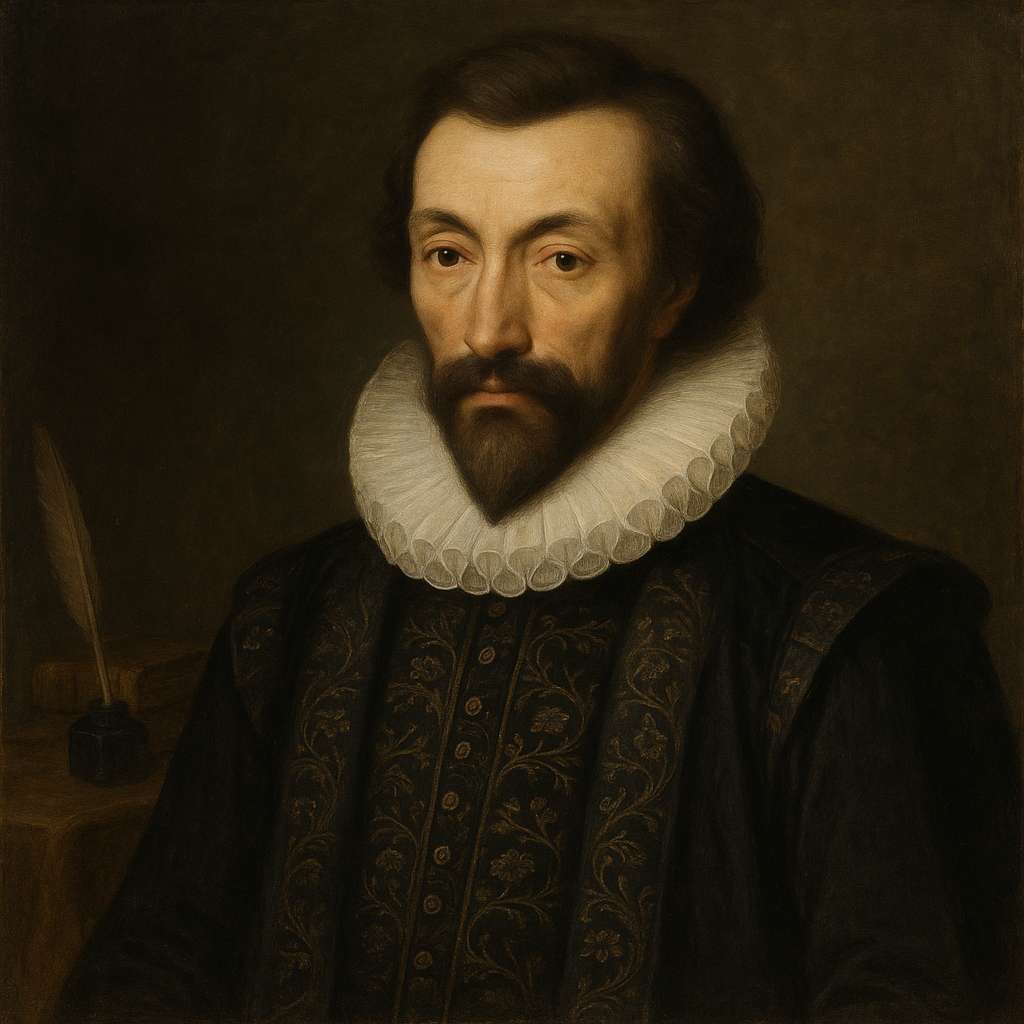Woman's Constancy
John Donne
1572 to 1631

Now thou hast lov'd me one whole day,
Tomorrow when thou leav'st, what wilt thou say?
Wilt thou then Antedate some new made vow?
Or say that now
We are not just those persons, which we were?
Or, that oathes made in reverentiall feare
Of Love, and his wrath, any may forsweare?
Or, as true deaths, true maryages untie,
So lovers contracts, images of those,
Binde but till sleep, deaths image, them unloose?
Or, your owne end to Justifie,
For having purpos'd change, and falsehood; you
Can have no way but falsehood to be true?
Vaine lunatique, against these scapes I could
Dispute, and conquer, if I would,
Which I abstaine to doe,
For by tomorrow, I may thinke so too.
John Donne's Woman's Constancy
Introduction
John Donne's "Woman's Constancy" stands as a testament to the poet's mastery of the metaphysical conceit and his profound exploration of love's complexities. This poem, with its intricate structure and layered meanings, offers a rich tapestry for literary analysis. Through a close examination of its form, language, and thematic elements, we can uncover the depths of Donne's insight into human relationships and the nature of fidelity.
Historical and Literary Context
Composed during the late 16th or early 17th century, "Woman's Constancy" emerges from a period of significant literary and social change. The Renaissance brought with it a renewed interest in classical forms and a burgeoning emphasis on individual experience. Donne, as a leading figure of the metaphysical poets, was at the forefront of a movement that sought to combine intellectual rigor with emotional intensity.
The poem's exploration of love and constancy must be understood within the context of Elizabethan and Jacobean attitudes towards marriage and courtship. While the ideal of romantic love was gaining cultural currency, marriages were still often arranged for social or economic reasons. Donne's work frequently grapples with this tension between passion and pragmatism, between the idealized notion of love and its often messy reality.
Form and Structure
"Woman's Constancy" is structured as a dramatic monologue, a form that Donne employs with characteristic skill. The speaker addresses an absent lover, creating an immediate sense of intimacy and tension. The poem consists of 17 lines, departing from traditional sonnet forms and demonstrating Donne's willingness to innovate within the constraints of lyric poetry.
The irregular line lengths and rhyme scheme (AABCCCDEEFGGFHHHI) contribute to the poem's argumentative tone. Longer lines often contain more complex ideas or rhetorical questions, while shorter lines punctuate the discourse with sharp observations or turns of phrase. This variability in line length mirrors the speaker's fluctuating emotions and the instability of the relationship he describes.
Language and Imagery
Donne's linguistic prowess is on full display in "Woman's Constancy." The poem is replete with legal and religious terminology, reflecting Donne's background in law and theology. Terms like "Antedate," "vow," "oathes," and "contracts" create a quasi-legal framework for discussing love, suggesting that romantic commitments are as binding—and as easily broken—as legal ones.
The use of paradox and oxymoron, hallmarks of metaphysical poetry, is evident throughout. The phrase "true deaths, true maryages untie" juxtaposes the finality of death with the supposed permanence of marriage, undermining both. Similarly, the notion that "lovers contracts" bind "but till sleep, deaths image, them unloose" presents a complex interplay between love, sleep, and death.
Donne's imagery is characteristically vivid and unexpected. The comparison of sleep to death's "image" evokes the transient nature of human consciousness and, by extension, human feeling. The description of the addressee as a "Vaine lunatique" introduces elements of madness and changeability, further emphasizing the theme of inconstancy.
Thematic Analysis
At its core, "Woman's Constancy" is an exploration of fidelity and the mutability of human emotion. The speaker's cynical tone suggests a deep-seated skepticism about the possibility of lasting love. By presenting a series of hypothetical excuses his lover might offer for breaking her vow, the speaker preemptively undermines any protestations of constancy.
The poem's treatment of time is particularly nuanced. The contrast between "one whole day" of love and the impending departure "to morrow" highlights the fleeting nature of passion. This temporal instability is further emphasized by the suggestion that one might "Antedate some new made vow," manipulating time itself to justify inconstancy.
Donne's exploration of identity and change is equally profound. The question "We are not just those persons, which we were?" suggests that personal transformation might serve as an excuse for infidelity. This notion challenges the very basis of romantic commitment, implying that promises made by one version of the self may not bind future iterations.
The poem's final lines introduce a striking twist. After systematically dismantling various justifications for inconstancy, the speaker admits, "For by to morrow, I may thinke so too." This sudden shift in perspective transforms the poem from an accusation into a confession of shared human frailty.
Gender and Power Dynamics
While the poem's title references "Woman's Constancy," the gender dynamics at play are more complex than they might initially appear. The speaker, presumably male, projects his own fears and potential for inconstancy onto his female lover. This projection raises questions about the nature of gender roles and expectations in romantic relationships of Donne's time.
The power dynamics within the poem are similarly multifaceted. While the speaker initially appears to hold a position of moral superiority, his final admission of potential inconstancy levels the playing field. This suggests a more egalitarian view of human nature, where both men and women are equally susceptible to changing hearts and minds.
Philosophical Implications
Beyond its exploration of love and fidelity, "Woman's Constancy" delves into deeper philosophical questions about the nature of truth, identity, and free will. The line "Can have no way but falsehood to be true?" presents a paradox that challenges conventional notions of truth and deception.
The poem also grapples with the concept of personal identity over time. By suggesting that we may not be "those persons, which we were," Donne touches on philosophical debates about the continuity of self that continue to this day. This idea has implications not only for romantic relationships but for the broader question of moral responsibility.
Conclusion
"Woman's Constancy" stands as a prime example of John Donne's poetic genius. Through its intricate form, rich imagery, and profound thematic explorations, the poem offers a nuanced examination of love, fidelity, and human nature. Donne's ability to combine intellectual rigor with emotional resonance creates a work that continues to challenge and inspire readers centuries after its composition.
The poem's enduring relevance lies in its unflinching portrayal of the complexities of human relationships. By presenting love not as an idealized abstraction but as a messy, often contradictory experience, Donne speaks to universal anxieties about commitment and change. The final twist, in which the speaker implicates himself in the very inconstancy he critiques, serves as a powerful reminder of our shared humanity.
In its brief span, "Woman's Constancy" encapsulates many of the themes and techniques that define Donne's oeuvre. It showcases his mastery of the dramatic monologue, his skillful use of metaphysical conceits, and his ability to infuse philosophical depth into deeply personal subject matter. As such, it remains a crucial text for understanding not only Donne's work but the broader landscape of English Renaissance poetry.
This text was generated by AI and is for reference only. Learn more
Want to join the discussion? Reopen or create a unique username to comment. No personal details required!



Comments
No comments yet. Be the first to comment!